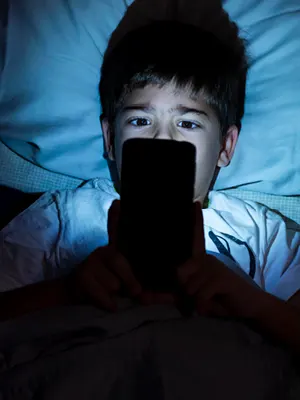What You Need to Know About Protecting Children and Teens from Sexual Violence Online
Protecting Children from Sexual Violence Online. Children are spending more time online than ever before. And they’re getting there sooner. Around the world, a child goes online for the first time every half second. Along with the potential benefits of online learning and expanding horizons is the possibility that non-consensual sexual interactions may occur through technology, such as photos, videos, social media platforms, and even online gaming environments.

Child sex offenders are using online environments to contact their potential victims, share imagery, and in some cases, meet with them live. Children may be victimized through the production, distribution, and consumption of sexual abuse material, or they may be groomed for sexual exploitation and meeting in person or by trying to pressure them into sharing explicit imagery of themselves.
Did you know that many online gaming platforms have a messaging feature?
Individuals who prey on children are aware that many parents do not know about this messaging feature, so parents don’t know how to check it. This provides opportunities for children to be “catfished” or “groomed” by a predator online with a fake profile.
In the digital world, any person from any location can create and store sexually exploitative content. Child sex offenders may even livestream sexual abuse from the confines of their homes, directing on-demand abuse of children far away.
According to UNICEF – 80% of children in 25 countries report feeling in danger of sexual abuse or exploitation online.
As children embrace more digital platforms, they too may self-generate sexually explicit imagery. And though these images might be intended for an age-appropriate relationship, they can end up widely shared without consent. Sometimes, trusted adults solicit children to share imagery. For a child victim, this may result in social isolation, mental health issues, substance abuse, self-harm, or suicide, as well as an increased likelihood of exhibiting abusive behaviors themselves in adulthood.
How Prevalent is Childhood Online Sexual Violence?
In this national survey study of 2639 individuals who were asked about sexual violence when they were children (now 18-28 years of age), respondents reported the following occurrences of online child sexual abuse:
- 16% image-based sexual abuse
- 11% self-produced child sexual abuse images
- 7% nonconsensual sexting
- 7% online grooming by adults
- 5% revenge pornography
- 3% sextortion
- 4% and online commercial sexual exploitation
What are some ways people use digital technology to hurt others?
The following list includes some of the ways a person can use digital technology in a sexually explicit or violating way:
- Unsolicited or unwanted sharing of pornography or pornographic images
- Distributing or threatening to distribute sexual or intimate images of someone without their consent, also known as digital sexual assault or revenge porn
- Hacking into someone’s online accounts or devices to steal personal images or information not intended for public sharing
- Catfishing – faking one’s identity online to begin a sexual relationship
- Cyberbullying
- Cyberstalking
- Gaming Harassing – harassing someone through a gaming platform
- Posting shaming, embarrassing, sensitive, or otherwise inappropriate information about someone on social media or other public sites, whether it is true or not
- Sexting, repeated asking for explicit images
- Sending sexually explicit emails, chats, texts, photos, videos, or emojis that are unwelcome or unsolicited
- Taking sexually explicit pictures or videos of someone without consent
Effects of Sexual Violence Online or on Electronic and Digital Devices
Experiencing sexual harassment, abuse, or bullying online can cause a plethora of negative feelings. The following list is not meant to be exhaustive but provides an overview of some possible consequences you may encounter after enduring this experience:
- Feeling violated, ashamed, humiliated
- People report feeling depressed
- Feeling anxious
- Having panic attacks
- Lack of motivation
- Having difficulty concentrating
- Abusing Substances
If you’d like to learn more about our community workshops for parents, please visit our Prevention Workshops page.
Help is Available
You are not alone. WOAR is here for you. If you or anyone you know has been a victim of sexual violence and would like guidance and/or support, please call our HOTLINE at: 215-985-3333 – all calls are confidential, and you can remain anonymous.
More information: Support Services for Parents, Care Givers, and Loved Ones and Responding to a Child’s Disclosure.





